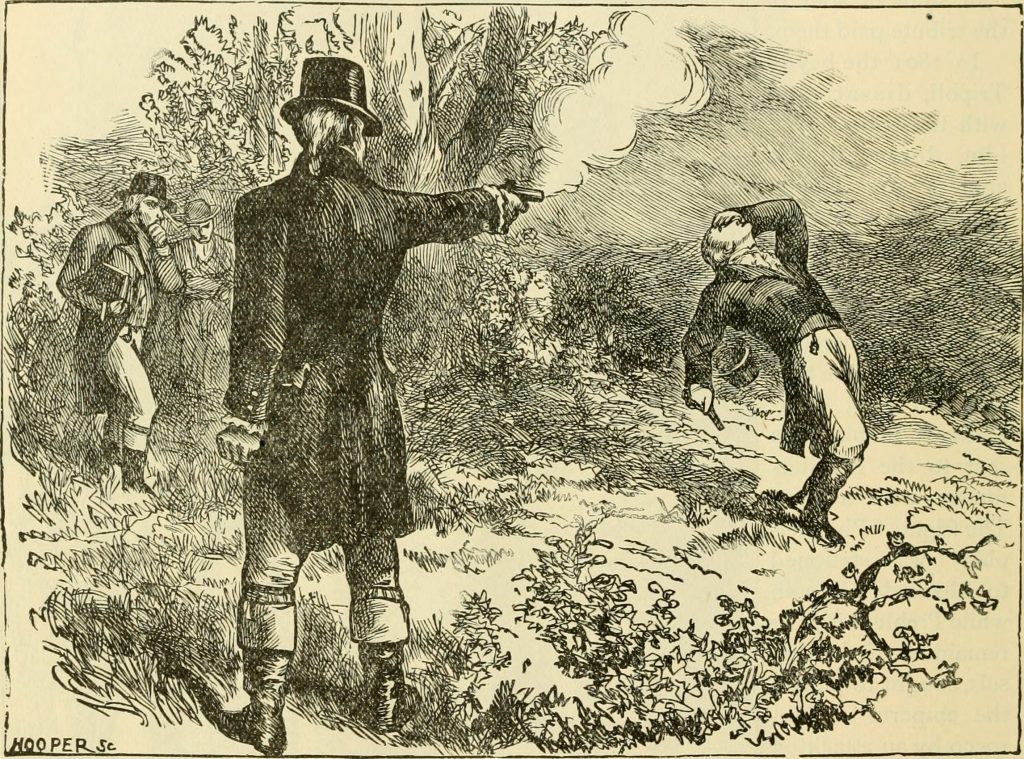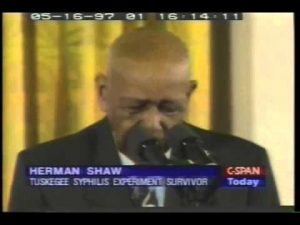United States history is filled with dramatic events and time periods correlating to the vast, wild, and sometimes reckless founding and expansion of Europeans fleeing tyranny in search of freedom. When one thinks about duels now, one may recall the Wild West, which was an aggressive time period where expanding territories remained somewhat lawless. But what if I told you the most infamous duel in US history never took place in any of the Wild West territories, where cowboys carried six-shooters on their hip. No, the most infamous duel in US history took place on a sacred dueling ground known as Weehawken, New Jersey, and was conducted by two Founding Fathers.
I think people tend to forget why the Revolutionary War was fought and the fallout the war caused around the world. In retrospect, it wasn’t all that long ago when revolutionaries decided to fight against tyranny and misrepresentation (of which oppressed people still fight against today). However, U.S. history is far more complex than the Declaration of Independence and the Revolutionary War. After freedom was won, the former colonists were faced with the problem of trying to govern themselves freely. For how can a country have both order and freedom? The ideals seemingly contradict each other, and this is the problem early U.S. politicians had to resolve if they were to create a country stable enough to withstand the test of time. The U.S. needed a strong enough government to protect the liberty of its citizens and maintain some sense of order in the new free world, and on June 21, 1788 the Constitution of the United States was ratified and adopted as the framework to allow the U.S. to govern itself. 1 And yet still, the U.S. was barely getting its legs underneath it. With a newly founded Republic of such size, the U.S. tested unknown waters and challenging social systems that emphasized order culminating with one ruler, one ideology, and a single representative to lead the people. The U.S. established a system that allowed the people to choose their leader, while still practicing their own free beliefs and individual ways of life.
To be a scholar and politician during the early Republic meant that one could possibly play a large role in molding the foundation that would become the United States we know today. Alexander Hamilton, the man on the twenty-dollar bill, was one of these exceptional characters who played a role in developing the United States. Hamilton was born in the British West Indies and orphaned as a child, yet he went on to become the United States’ first Secretary of Treasury in George Washington’s cabinet. He, along with James Madison and John Jay, earlier authored a series of essays then published in newspaper articles detailing their interpretation and counter-arguments to the stances of Anti-Federalist critiques of the Constitution.2 Hamilton also fought in the Revolutionary War, was a delegate that signed the Constitution, and worked with George Washington directly during his presidency. Hamilton helped to establish the U.S. National Bank along with many other accomplishments. This is not to say that he was entirely the most liked, especially with his longtime battle against rival Aaron Burr. Much like Hamilton, Burr was also a respected figure, who also fought in the war alongside George Washington.3 He was also a politician, but most importantly, he lived in New York. Why is this important? Because Hamilton’s rival also lived in New York and they shared plenty of encounters leading up to their fateful morning.

One of the most significant instances came during the 1800 Presidential election. Seeing that Burr and his running mate Thomas Jefferson were both awarded the same number of electoral votes—the vote moved to the House of Representatives to elect the next president of the United States. Alexander Hamilton used his immense influence on the representatives voting to elect Jefferson over Burr. This would be a major blow to Aaron Burr as Jefferson would go onto win the Presidency. Three years into Jefferson’s first term, Jefferson decided to drop Vice President Aaron Burr from his ticket when he runs for reelection. After finding this out, Burr looked for other ways to regain political power. Burr saw an opportunity to be potential presidential candidate in the years following—and in order to do so he ran for the position of New York Governor in 1804 to try and remain within the political elite. In the months leading up to election, newspapers had been publishing critiques of Burr’s character, calling him a “dangerous” man. These words came from none other than Alexander Hamilton, who was still quite relevant and respected for his character and honor. The result of his smear campaign was that Burr lost the election for governor by a large margin to a lesser known candidate, Morgan Lewis, causing animosity to spike in Burr’s eyes.4 Burr had fought in the revolutionary war alongside George Washington. Burr was a war hero, a lawyer, and a founding father, but his humiliating loss in the New York Governor race never left him peace. He felt cheated, smeared, and belittled. He was not going to let his character be slandered by Hamilton’s words, which caused him to write a series of letters to Hamilton asking that he publicly recant his statement about Burr.5 Hamilton refused accordingly, and through a series of letters between the two individuals, the stage was set for arguably the most infamous duel in American history. There was no other way to settle their dispute, and when one’s honor was called into question there is only one appropriate way to settle such a case. Duels were illegal at the time, but this did not seem to stop men of honor from participating. Under such pretense, the two men had agreed to an honorable duel on the sacred dueling grounds of Weehawken, New Jersey on July 11, 1804.
On the early morning of July 11, the two men, accompanied by their “seconds” or trusted person responsible for negotiating duels according to Code Duello, rowed across the Hudson River to the soggy marsh of Weehawken, New Jersey. It was there where both parties met, unable to resolve their issues with words, and they went forward with the duel. Each took their pistol, loaded, and marched 10 paces away, then turned to face each other, to which the “Present!” call was given… What is known is that Hamilton fired first, and missed. Burr followed with his shot, striking Hamilton in the abdomen, a fatal wound. It is important to address the speculation regarding Hamilton’s intent on dueling with Aaron Burr. He allegedly foretold that he would purposely miss his shot at Burr. This is not to say that Hamilton believed that the two would both leave alive—with their issues resolved. No, Hamilton drafted his will and wrote letters to his family members, should anything happen to him.6 Burr’s shot struck Hamilton in the abdomen, piercing his liver, and lodging in Hamilton’s spine. Aaron Burr had won. Regardless of whether Hamilton was attempting to take Burr’s life, Hamilton missed his shot. Burr did not. Hamilton was rowed back across the Hudson and die slowly over the next day, surrounded by his family at his Manhattan residence.7
Some may find it confusing, that one could partake in a duel over mere words. But remember at the time, honor largely fueled credibility. And on the other hand, it was seen as cowardice to refuse a duel. Alexander Hamilton was no coward and subsequently accepted Burr’s challenge. Who knows, there have even been theories stating Hamilton actually wished to die. The site of the Burr-Hamilton duel was also the site where Hamilton’s son died—partaking in a duel one year prior to the Hamilton-Burr Duel. Maybe it was fate. Maybe it was where Hamilton wished to end his life, in the same place and fashion in which he lost his son. But these are only speculative questions raised after the death of Hamilton. And yet, the story does not end there, because this is not entirely a story of life and death, but rather a story about revenge.

It can be said that Burr was obsessive, driven to such lengths just to be on the receiving end of political power. It was Burr who challenged Hamilton, because to Burr, Hamilton was an enemy preventing Burr from success! Burr refused to accept the subjective comments made by Alexander Hamilton. Burr had climbed the political ladder and was so close to the Presidency. Burr may have seen his own greed as passion, to go down in history as the man whose ambitions were thwarted by his obscure sense of responsibility. Burr may have unknowingly crossed the fine line that divides passion and obsession to the point where he killed the man who preyed on his downfall. But in that same sense, how was a man to act at that time when faced with such an issue? Burr was also a war hero! A man who was willing to die for the sake of freedom, a man who dedicated his life to liberty! A man who believed in free speech, but also the fact that free speech comes with consequences. Burr was not afraid to die for something he believed in. Perhaps if the duel had taken place some ten to fifteen years prior, it may have been less significant in United States history; but the war was over. Freedom had defeated tyranny, and the new age was to live out that freedom, not to continue bloodshed.

On the other hand, Hamilton knew politically he had to accept the duel. He would otherwise be seen as a coward if he did not, and he would lose all credibility if he recanted his comments criticizing Burr. But he also knew that Burr would face backlash if he killed Hamilton, and this is exactly what happened. After Burr killed Hamilton, he faced animosity from the public for killing Hamilton, and he fled South to avoid murder charges. This was not the welcoming that Burr expected for defending himself against a man who had made such egregious claims against him. And with the death of Hamilton marks the inevitable death of Burr’s political career. Perhaps Burr made the wrong move by taking this rivalry too far, but one mistake is all it takes to end one’s life, whether it be figuratively or literally. The rivalry that fueled two men to bring forth such passion in hopes of creating a more perfect Union eventually succumbed to the “death” of both men. While Hamilton lost his life, Burr killed his political career—leading towards a downward spiral before his eventual death in 1836.8
Alexander Hamilton let out his final breaths surrounded by his family, dying 36 hours after the duel. He was remembered as a war hero, a scholar, an example of a true American. Born overseas and orphaned, Hamilton worked tirelessly and lived to become a wealthy man— a fine representation of what is now considered the American Dream. Hamilton came from nothing and died a Founding Father whose work was revered and essential to forming the building blocks of the newly founded United States. He was a man who was willing to die for free speech and wound up doing exactly that—a tragic end to the lives of two honorable men who were essential in establishing the country we now call home. Both men were responsible for conducting a duel, and both would pay for their participation. It is in fact honorable that both men would die for their beliefs and opinions, but at the cost of their own lives is a tragedy indeed. Aaron Burr and Alexander Hamilton, two men who would compete until the very end defending their honor. But in their final battle, both would lose.
“Never do today what you can put off till tomorrow. Delay may give clearer light as to what is best to be done”
-Aaron Burr
“I have thought it my duty to exhibit things as they are, not as they ought to be.”
-Alexander Hamilton
- John R. Vile, The Writing and Ratification of the U.S. Constitution: Practical Virtue in Action (Lanham, MD: Rowman & Littlefield Publishers, 2012) 171-174. ↵
- Alexander Hamilton, James Madison, John Jay, The Federalist Papers (New York: Bantam, 1982). ↵
- Teri Kanefield, Alexander Hamilton: The Making of America (New York: Abrams Books for Young Readers, 2017). ↵
- Thomas N. Baker, “‘An Attack Well Directed’ Aaron Burr Intrigues for the Presidency,” Journal of the Early Republic 31, no. 4 (Winter 2011): 553-54. ↵
- To Alexander Hamilton from Aaron Burr, 22 June 1804, Founders Online, National Archives, https://founders.archives.gov/documents/Hamilton/01-26-02-0001-0212. Original source: The Papers of Alexander Hamilton, vol. 26, 1 May 1802 – 23 October 1804, Additional Documents 1774–1799, Addenda and Errata, ed. Harold C. Syrett (New York: Columbia University Press, 1979), 255–256. ↵
- To Alexander Hamilton from Aaron Burr, 22 June 1804, Founders Online, National Archives, https://founders.archives.gov/documents/Hamilton/01-26-02-0001-0212. Original source: The Papers of Alexander Hamilton, vol. 26, 1 May 1802 – 23 October 1804, Additional Documents 1774–1799, Addenda and Errata, ed. Harold C. Syrett (New York: Columbia University Press, 1979), 293. ↵
- Thomas Fleming, “Duel,” in Alexander Hamilton, Aaron Burr and the Future of America (New York, NY: Perseus Books, 1999), 333. ↵
- Thomas Fleming, “Duel,” in Alexander Hamilton, Aaron Burr and the Future of America (New York, NY: Perseus Books, 1999), 400-406. ↵



65 comments
Gabriella Parra
You pointed out that Hamilton and Burr have similar backgrounds. They were both Revolutionary War veterans and founding fathers. It is interesting that they did not find the same success. This is probably due to the ideologies and mindsets of both men. The quotes you used show just how different these men were. Burr was a cautious man while Hamilton was more forward.
Eugenio Gonzalez
The reading theme connects with the class because it discusses how the founding fathers and others had discussions about how the republic would operate. The story takes place in the early years of the U.S as an independent country. It fits the reading because many of the founding fathers are in public administration.
Kimberly Rivera
incredible article! Even though it was lengthy it provided a great insight to the after effects of this duel. It is quiet shocking how the duel came to and how it ended. Their anger, distaste and hate towards each other lead them to their own end, they both dug their own grave and it lead to Hamiltons death and Burrs political career to fall into shambles. Which is why i agree that ultimately both of them lost the duel.
Emily Rodriguez
This was a great article with an excellent storyline. The author did a great job of being descriptive as well as understandable. I really liked the way the author opened up this article with the comparison of cowboys in the wild west. This article was extremely informative and kept my attention throughout the entire article. I also liked that the author would ask the reader rhetorical questions throughout the reading, very smart.
Brandon Vasquez
This article was really well written overall. I liked the metaphor comparing the “wild west” to this specific duel. Ultimately the introduction and background given leading up to the duel itself really helped me understand the total picture of this duel as well as why Aaron Burr ultimately challenged Alexander Hamilton.
Brandon Vasquez
This article was really well written overall. I liked the metaphor comparing the “wild west” to this specific duel. Ultimately the introduction and background given leading up to the duel itself really helped me understand the total picture of this duel as well as why Aaron Burr ultimately challenged Alexander Hamilton.
Morgan Cassias
The tension between Alexander Hamilton and Aaron Burr presented by the Article personally had me wanting more to read about it. It did not fail to read more information about the event is provided with the background information along with the pictures provided to apply more of a visual approach to how these scenes were depicted. It is a great article topic because the death of Alexander Hamilton is important to know and it provides detail about and around the situation.
Alexandra Camarena
I loved this article! Like most people I had heard of the famous duel in the play Hamilton but never really all the moments that really led up to this historic event. I found this article very informative I hadn’t actually ever heard that Hamilton was able to sway most of the representatives to vote for Jefferson rather than Burr.
Courtney Mcclellan
Really well written. I liked how you included why Hamilton couldn’t really say no to the duel because it would cause his image lasting harm and why Burr wanted to have the duel in the first place because of Hamiltons slander. The inclusion of the aftermath of Burr’s career really emphasizes the consequences for both parties of the duel. Your inclusion of the description of the two different founding fathers and their careers highlights their similarities and helps explain the animosity between the two.
Rigel
Amazing article! This is a great article that describes the relationship between Burr and Hamilton, and how the duel affected Burr’s career as a politician. I really liked the introduction of your article, the talk about the most infamous duel, not being from the wild west but from two founding fathers, was great. Also, I couldn’t stop thinking about how accurate the musical may have been.